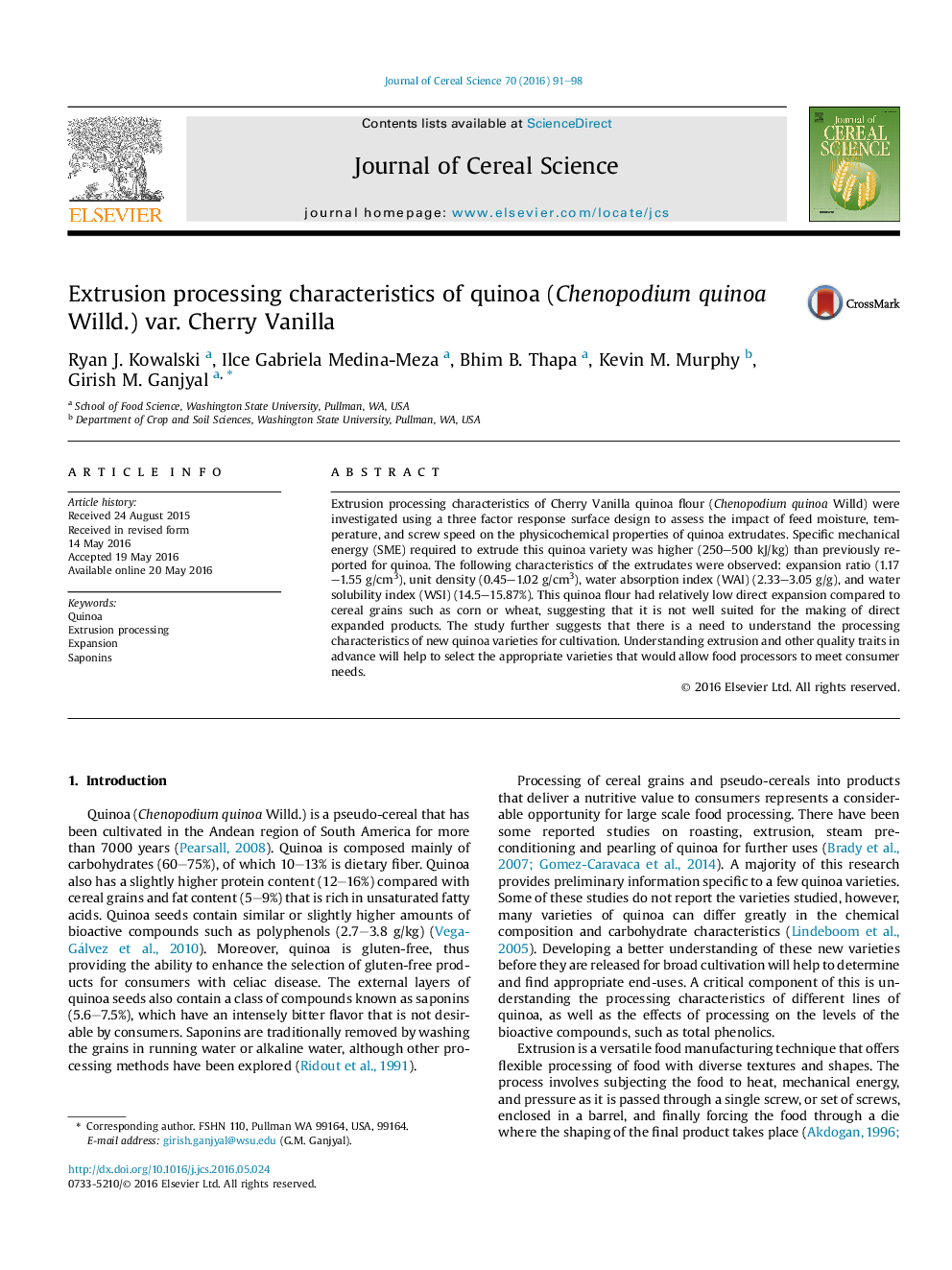| Article ID | Journal | Published Year | Pages | File Type |
|---|---|---|---|---|
| 4515482 | Journal of Cereal Science | 2016 | 8 Pages |
•A predictive model for extrusion of a new breeding line of quinoa is disclosed.•Large increase in quinoa darkness were found to occur with high moisture.•Saponin and phenolic reduction through temperature effects of extrusion are explored.•Conclusions are drawn on how various extruded quinoa products can be produced.
Extrusion processing characteristics of Cherry Vanilla quinoa flour (Chenopodium quinoa Willd) were investigated using a three factor response surface design to assess the impact of feed moisture, temperature, and screw speed on the physicochemical properties of quinoa extrudates. Specific mechanical energy (SME) required to extrude this quinoa variety was higher (250–500 kJ/kg) than previously reported for quinoa. The following characteristics of the extrudates were observed: expansion ratio (1.17–1.55 g/cm3), unit density (0.45–1.02 g/cm3), water absorption index (WAI) (2.33–3.05 g/g), and water solubility index (WSI) (14.5–15.87%). This quinoa flour had relatively low direct expansion compared to cereal grains such as corn or wheat, suggesting that it is not well suited for the making of direct expanded products. The study further suggests that there is a need to understand the processing characteristics of new quinoa varieties for cultivation. Understanding extrusion and other quality traits in advance will help to select the appropriate varieties that would allow food processors to meet consumer needs.
